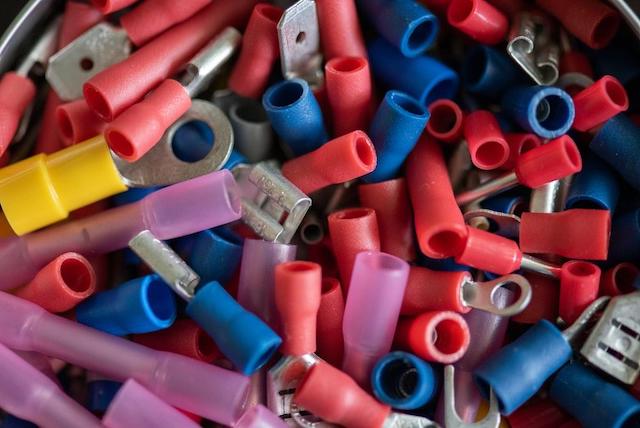Where would we be today without coextrusion? There would be no multi-polymer tubing, which means the medical field could not function at the level it does today.
The process of custom tubes/coextrusions is not only imperative for medical areas such as cardiology but is an interesting subject when we look at the technology involved. The process is evolving and respected in its own right—we mustn’t take it for granted.
In the medical industry, plastic coextrusion are sometimes referred to as plastic sleeves. Find out more about them here.
 What Is Plastic Coextrusion?
What Is Plastic Coextrusion?
When two or more types of materials, such as polymers, are pressed through the same mold to produce a single piece, this is called coextrusion. It’s most popularly done with plastics and rubbers to create some important products we may take for granted today.
This process results in the pieces having properties unique to the original materials themselves, inside and out. This has been a great step forward in material engineering and we still have many more possibilities to explore within the field of manufacturing. The coextrusion machines will continue to evolve and give us ever more advances.
Coextrusion used to be a difficult task, but new technology, as it moves forward exponentially, is making it easier and less expensive. Plastic and rubber are the materials we’re going to cover in this article.
Let’s talk about some of the pieces we can make for use in the medical field. Then we’ll move on to some other products made by using this process.
 Plastic Coextrusion In The Medical Field
Plastic Coextrusion In The Medical Field
Common items we make here at Petro Packaging with this process range from medical tubing to simply a sleeve that a more important device goes into for safe storage. The resulting products are also used for medical jobs where their part has to fit into a specific slot or medical device. Here are some examples of plastic coextrusion:
Catheters
One example of a coextruded medical supply is the catheter. A stripe of “radiopaque plastic” is extruded with the catheter material, which has the effect of helping x-ray quality as it moves through the vein. Adding this material doesn’t compromise its effectiveness, rather it improves it tremendously.
Multi-Lumen Tubing
Multi-lumen tubes have three or more separate holes that are constant down the entire tube. These are used when delivering oxygen, fluid, or wires. They can be created using any number of custom shapes, usually geometrical, with a round outer tube and are created using either custom or common thermoplastic resins.
Dual-Lumen Tubing
These are created in the same way as the above multi-lumen tubing but use interior shapes such as “D” shapes or circles, for example. These are commonly called “Double D” or “smiley face” tubes.
Profile Extrusions
These are similar to dual-lumen tubing except the outside of the tube will be non-round. These can be manufactured using custom outer profile shapes inside a coextrusion machine.
Monofilaments
These are round, solid extrusions of custom nylon or thermoplastic polymers. They’re used in assessing the sensations in peripheral nerves, especially in patients with neuropathic conditions such as diabetes mellitus.
In the foot, for example, if they can’t feel the prodding of such a monofilament, that will usually mean a diabetic peripheral neuropathy diagnosis.
Striped Tubing
Adding a colored stripe to a tube can help denote which chemical or substance is being passed through it during a medical procedure. You can see how important this can be. The colors are added to the tubes much like they’re added to drinking straws, for example.
Paratubing
This sounds like a watersport, but it’s actually a technique is used to attach two tubes with a thin web of plastic. They’re also called “peel-apart” tubing. They are bonded along the entire length but can be separated at any point(s).
What Materials Are Used?
These amazing materials have endless possibilities, some block UV rays while some are anti-microbial. Here’s a list of materials that are commonly used in coextrusion:
- ABS
- PETG
- CAP
- PVC
- Polyurethane
- Polypropylene
- Polystyrene
- HDPE & UHMW Polyethylene
- Acrylic
- TPR/TPE/TPV
- Nylon
- PTFE
- Polycarbonate
Two or more of these materials can be coextruded in striped alignment or blended. They can cover the outer or inner surfaces of tubing or help in the construction of medical devices. They have uses in the pharmaceutical industry as well.
 Other Popular Uses
Other Popular Uses
Coextrusion is in your everyday life and you may not know it. Fences and Handrails can be constructed using recycled plastics, reground scrap, and virgin material.
This is used to create food and cosmetic containers as well. Often the result is stronger than the original material and reduces costs, so it’s a win-win.
As we mentioned above, your average plastic drinking straw is a product of the striping of plastic using a plastic coextrusion machine.
PVC pipes, plastic bags, packaging, and plastic insulated wires can all be made using various methods of coextrusion if two or more polymers are needed. The methods include sheet extrusion, blown film, and tubing extrusion.
Sheet Extrusion
This is done with plastic film coextrusion by first running a thick sheet of plastic through a die. This changes its consistency. Afterward, it’s ready to be transformed into packaging, for example. To do this it’s thermoformed (heated and molded) into the required shape.
Blown Film
We use this method to make plastic bags. It involves running material through a die and directing it around certain open or interior spaces. Then it’s cooled, stretched with rollers and air pressure.
Tubing Extrusion
This is a lot like the blown film process, except tubing extrusion results in thicker, stronger plastic products that are hollow. PVC and other types of pipes or hardware are made using plastic coextrusion machines.
Coextrusion Is Here to Stay
We’ve discussed the processes and products, and discovered the secrets behind the creation of everyday products. Who knew plastic coextrusion involved so many different polymers and careful chemistry?
Plastic coextrusion is a lot like plastic extrusion. The main difference is that plastic coextrusion produces a singular profile by inserting two or more polymers or other materials into the extrusion die. Each material feeds into the process at specific stages of the production line.
The first stage involves feeding material through the die into your basic profile, then feeding additional materials into the process to achieve a final form. This achieves the desired composition of plastics and other materials.
Benefits of Plastic Coextrusion
Undertaking multiple extrusions separately can be costly because it requires assembling different parts. It would also result in a product with joins. On the other hand, plastic coextrusion integrates different polymers and other materials. You can also integrate two variations of the same material, each with a different property, such as density.
For example, you can produce a plastic part that integrates low- and high-density versions of a polymer like polyethylene. The low-density polyethylene (LDPE) provides flexibility, and the high-density polyethylene enables easy assembly with other parts. You can integrate a non-polymer material to give the final production additional desired characteristics.
Plastic coextrusion is preferable to extruding multiple components separately and assembling them because it cost less and prevents joins. Moreover, tooling for plastic coextrusion costs less compared to injection molding.
Uses of Plastic Coextrusion
Coextruded Structural Units
Plastic can make a good substitute for wood in many cases. For example, some manufacturers use plastic lumber to produce fences, boat docks, decking and other dimensional components. The characteristics of the plastic make it more suitable than natural wood in these cases. Many industrial products are inexpensive to fabricate using plastic extrusion. Moreover, coextrusion allows manufacturers to add compounds such as titanium dioxide to exterior structural plastics, making them weather resistant. They can also use recycled plastic for the inner layers to cut costs without compromising quality.
Coextruded Tubing
Coextruded tubing makes products such as multi-colored drinking straws. Colored tubing can be used to denote specific chemicals in the medical industry. Coextrusion can also produce flexible tubing with a hard interior through which cables are run. The process can create a high-performance plastic liner to prevent corrosion inside tubes or affordable coating to make tubing hefty and stable. Plastic extrusion can also be used to produce the cable and jacket on plastic fiber optic cables.
Sheet Materials
Manufacturers use plastic extrusion to produce acrylic and polycarbonate sheeting to serve as infrared or UV barriers. These sheet materials allow visible light to pass through while reflecting away UV or infrared rays. They’re resistant to deterioration due to light exposure and do not discolor over time. Manufacturers can also extrude abrasion-resistant plastic film onto sheet materials to prevent erosion.
Co-extrusion Blow Molding
Blow-molding extrudes plastic into molds and cuts it to length. Pressurized air then expands the extruded plastic, which takes the shape of the cavity and forms into the final product, such as bottles used in the cosmetic or food industries. Manufacturers coextrude a barrier layer onto the plastic to enhance the product’s shelf life and prevent the leaching of moisture or gases. Many beer products, for example, use coextruded plastic for its non-porous properties.
Cost-Effective, High-Quality Custom and Stock Plastic Products
Coextruded plastic products are present in many industries, including energy, food and medicine. Still, the list of applications of plastic coextrusion continues to grow because it’s cost-effective and produces high-quality plastic products. Visit Petro Packaging for custom and stock plastic tubes, containers and other plastic products.

 What Is Plastic Coextrusion?
What Is Plastic Coextrusion? Plastic Coextrusion In The Medical Field
Plastic Coextrusion In The Medical Field Other Popular Uses
Other Popular Uses

